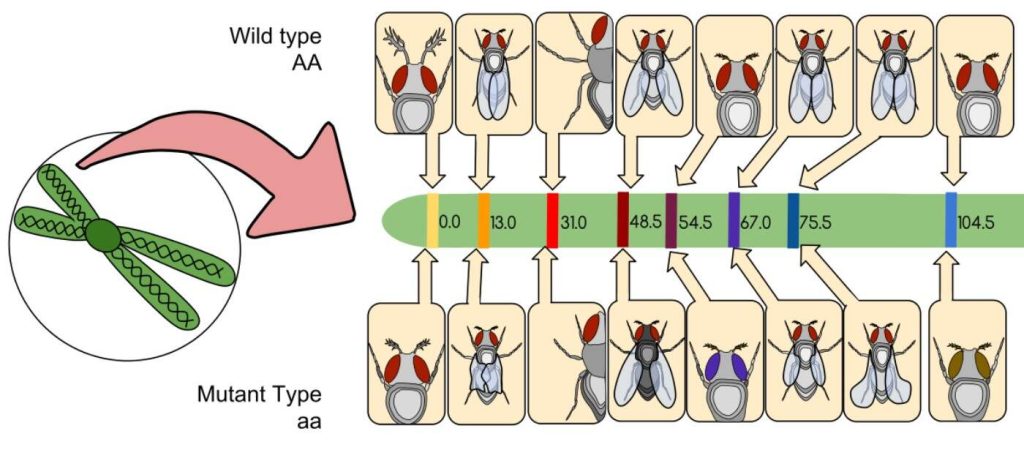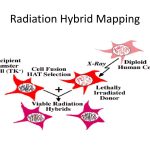A genome map helps scientists navigate around the genome. Like road maps and other familiar maps, a genome map is a set of landmarks that tells people where they are, and helps them get where they want to go.
The landmarks on a genome map might include short DNA sequences, regulatory sites that turn genes on and off, and genes themselves. Often, genome maps are used to help scientists find new genes.
Road maps chart well-known territory surveyed with astonishing precision, but a genome map is a map of a new frontier. In that sense, a genome map is more like the maps of North America made when Europeans were just beginning to explore the continent.
Some parts of the genome have been mapped in great detail, while others remain relatively uncharted territory. It may turn out that a few landmarks on current genome maps appear in the wrong place or at the wrong distance from other landmarks. But over time, as scientists continue to explore the genome frontier, maps will become more accurate and more detailed. A genome map is a work in progress.
What does a genome map look like?
Most everyday maps have length and width, latitude and longitude, like the world around us. But a genome map is one-dimensional—it is linear, like the DNA molecules that make up the genome itself. A genome map looks like a straight line with landmarks noted at irregular intervals along it, much like the towns along the map of a highway. The landmarks are usually inscrutable combinations of letters and numbers that stand for genes or other features—for example, D14S72, GATA-P7042, and so on.
What is the difference between a genome map and a genome sequence?
Both are portraits of a genome, but a genome map is less detailed than a genome sequence. A sequence spells out the order of every DNA base in the genome, while a map simply identifies a series of landmarks in the genome.
Sometimes mapping and sequencing are completely separate processes. For example, it’s possible to determine the location of a gene—to “map” the gene—without sequencing it. Thus, a map may tell you nothing about the sequence of the genome, and a sequence may tell you nothing about the map.
In other cases, the landmarks on a map are DNA sequences, and mapping is the cousin of sequencing. For example, consider the following sequence:
 |
A map of that sequence might look like this:
 |
On this map, GCC is one landmark; CCCC is another. In the corresponding sequence, each base is a landmark. In other words, the sequence is simply the most detailed possible map.
In general, particularly for humans and other species with large genomes, creating a reasonably comprehensive genome map is quicker and cheaper than sequencing the entire genome. Simply put, mapping involves less information to collect and organize than sequencing does.
Many animal “genome projects” currently underway, such as those that focus on the dog and the horse, aim to map the genomes of these species. This will help scientists learn more about the biology of these species, without the enormous resources required when sequencing a genome.
By contrast, studying the human genome is actually a two-pronged effort, aiming at both a comprehensive genome map and a complete genome sequence. Advances in sequencing help the mappers move ahead, and advances in mapping help the sequencers make progress. These efforts are closely linked but not exactly the same thing.
Why map a genome if we are going to sequence it anyway?
At first glance, this strategy of sequencing and mapping may seem redundant, since a sequence is simply the most detailed map possible. Why not just sequence the genome? And why keep mapping the human genome if it’s already been sequenced?
One reason is that a map can actually help you sequence the genome. If you’re sequencing a genome with the clone-by-clone method, you need a map in order to determine where each clone belongs in the genome. The more detailed and accurate your map, the easier it is to snap those pieces of genomic jigsaw puzzle into place. With whole-genome shotgun sequencing, a map is no longer central to the strategy, but one can still be used to help match the big pieces of assembled sequence to their proper place in the genome.
Another reason—which also helps explain why the human genome sequence doesn’t make the mappers’ work moot—is that you need a map in order to understand the genome sequence. A sequence is pretty much featureless: just a long, long string of DNA bases or “letters.” For the most part, scientists can’t look at a sequence and see immediately which parts are genes or other interesting features, and which parts are “junk.” But the landmarks on a genome map provide clues about where the important parts of the genome sequence can be found.
What are genome maps used for?
Genome maps help scientists find genes, particularly those involved in human disease. This process is much like a scientific game of hot and cold. Scientists study many families affected by a disease, tracing the inheritance of the disease and of specific genome landmarks through several generations. Landmarks that tend to be inherited along with the disease are likely to be located close to the disease gene and become “markers” for the gene in question.
 Courtesy of the National Library of Medicine. |
Once they have identified a few such markers, scientists know the approximate location of the disease gene. In this way, they narrow down their search from the entire 3-billion-base-pair genome to a region of the genome a few million base pairs long.
Next, they look for genes in that part of the genome and study the genes one by one to learn which one is involved in the disease. For example, they might look for a gene that has a different sequence in people with the disease than it does in healthy people. Or they might look for a gene with a function that could be related to the disease.
Genes for cystic fibrosis, Huntington’s disease, and many other inherited diseases have been identified by this method. But it’s a time-consuming, laborious process. Several million base pairs is still a lot of DNA, and a region of the genome that size may contain dozens of genes for scientists to sort through. Imagine you have a road map that can get you to the right neighborhood, but then you have to drive around and knock on doors until you find the house you’re looking for.
In the future, researchers hope that more detailed genome maps will help them find genes faster, leading them straight to each gene the way you can look at a road map and determine the sequence of streets that will take you exactly where you want to go. A more detailed map would also help scientists study complex human diseases and traits that involve many genes—for example, cancer, heart disease, and personality.
In addition to helping in the search for genes, genome maps are useful in the day-to-day activities of molecular biology laboratories. In the lab, the human genome lives in the form of “clones”—chunks of DNA that have been chopped up and spliced into the DNA of bacteria or other cells. This method keeps each chunk of the genome separate from the others and available in many copies for easy experiment and study.
Maps provide a language of landmarks that help scientists work with DNA in this form. For example, choose a clone at random and analyze which landmarks it contains, and you will know which “neighborhood” of the genome the clone comes from. By the same token, if you are looking for a particular part of the genome and know which landmarks are found there, you can rapidly sort through many clones to find the desired one.
Genome maps also help scientists find and learn about other important parts of the genome, such as the regulatory regions that help control when genes are turned on and off. Maps help scientists keep track of which colleagues are studying nearby or related parts of the genome, so they can learn from each other and don’t duplicate each other’s work. They illuminate the overall structure of the genome—places where several related genes are clustered together, for example, or parts of the genome that contain an unusually rich concentration of genes. Finally, genome maps enable scientists to compare the genomes of different species, yielding insights into the process of evolution.


